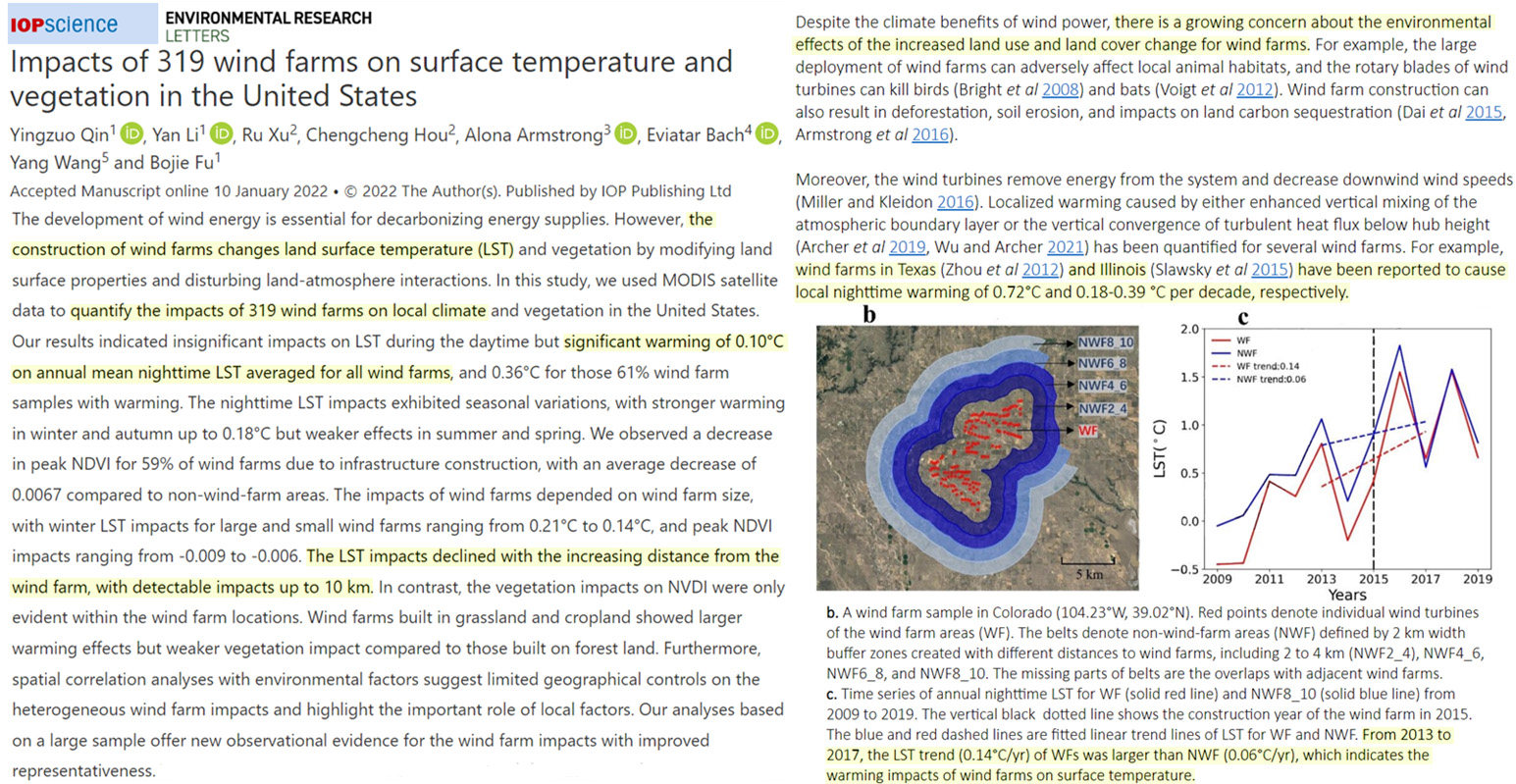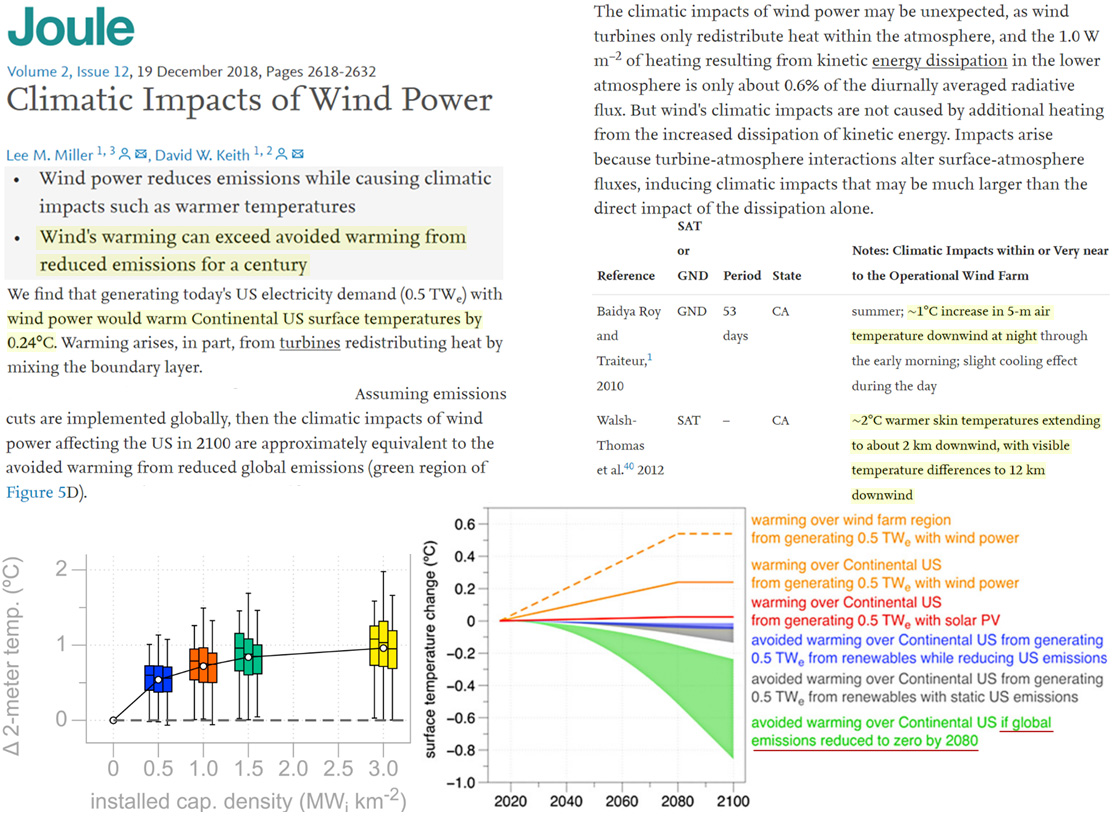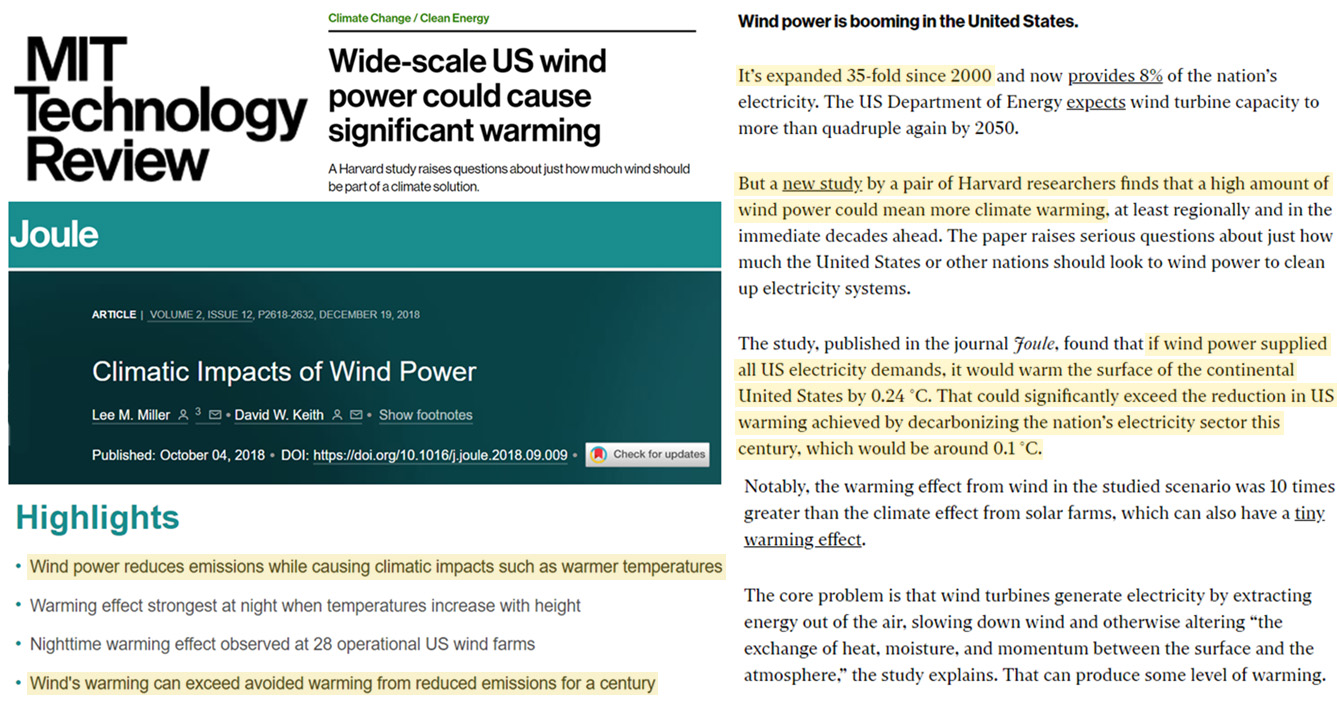Wind turbines do not reduce surface warming. They enhance it.
Wind power expansion is thought to be “green,” reducing CO2 emissions and consequent surface warming.
But a new study (Qin et al., 2022) affirms the warming “saved” by emissions mitigation is easily exceeded by the direct surface warming from turbine-atmosphere interactions.
In assessing of the climate effects of 319 wind farms, the authors have determined wind power-warming can amount to as much as 0.10°C per year (1°C per decade) in nighttime temperature increases. They point out that other studies have also shown wind turbines cause nighttime warming of 0.3°C to 0.7°C per decade in states like Illinois and Texas.
The wind farm-induced surface warming can climatically be detected as far as 10 kilometers from the wind farm site.
So by dramatically expanding the use of wind power to cover larger and larger portions of the land surface area in the coming decades, “green” energy wind power policies may actually be having the opposite of their intended effect.
Image Source: Qin et al., 2022
This new analysis is consistent with a 2018 study (Miller and Keith) asserting “wind’s warming can exceed avoided warming from reduced emissions for a century.”
Miller and Keith assessed the only way the expansion of wind power could actually net reduce surface warming instead of adding to it is “if global emissions [are] reduced to zero by 2080” (shown in green, below). Of course, with several Asian countries adding 600 coal plants in the coming decade, achieving “zero emissions” 50 or 60 years from now is hardly realistic.
The authors also suggested the net warming climate impacts (0.24°C in their study and up to 1°C to 2°C in others) induced by wind power can be detected up to 12 kilometers away from the wind farm sites. Thus, while the climate impacts may not be global in scope, the expected wind farm expansion in the coming decades due to “green” CO2-mitigation policies may serve to dramatically increase regional – and not just local – surface temperatures.

Image Source: Miller and Keith, 2018






But we have to warm the world in order to cool it.
Cool Back Better?
Brilliant, thanks
[…] New Study: Adding Wind Farms Leads To 1°C Per Decade Nighttime Land Surface Temperature Warming […]
ANything to keep fossil fuels in business. The windfarms do not heat the land by adding energy, it is just a mixing of the air that is warmer from a little higher up. As it says down below, this is not a justification of blocking wind farms.
https://www.theguardian.com/environment/2012/apr/29/wind-farms-night-temperatures-study
The scientists say the effect is due to the gentle turbulence caused by the wind turbines. After the sun has set, the land cools down more quickly than the air, leaving a cold blanket of air just above the ground. But the turbine wakes mix this cold layer with the warmer air above, raising the temperature. A previous study found a similar effect but was based on data from only two weather stations over just six weeks.
“The result looks pretty solid to me,” said Steven Sherwood at the climate change research centre at the University of New South Wales, Australia. “The same strategy is commonly used by fruit growers, who fly helicopters over the orchards rather than erect windmills, to combat early morning frosts.”
“Overall, the warming effect reported in our study is local and is small compared to the strong year-to-year changes” that result from natural variation, said Zhou. The study is published in the journal Nature Climate Change.
He told the Guardian that his results could not be used as an justification for blocking new windfarms. “The warming might have positive effects,” he said. “Furthermore, this study is focused only on one region and for only 9 years. Much more work is needed before we can draw any conclusion.”
The Guardian a reference? Pluuuease